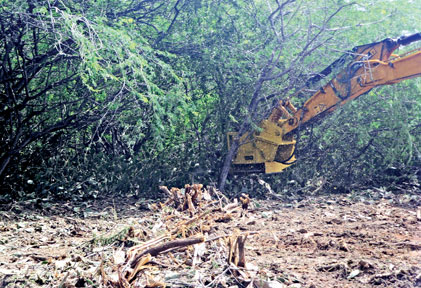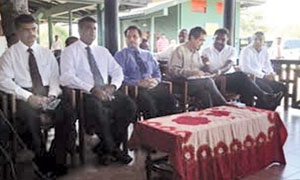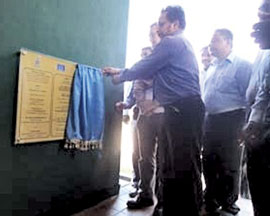United Dendro plans Rs 100m power project
By Sanjeevi Jayasuriya
 To preserve Bundala National Park, United Dendro (Pvt) Ltd, a
subsidiary of the LOLC Group, in collaboration with the Department of
Wildlife Conservation initiated a program to eradicate two invasive
alien plants 'Prosopis Juliflora' and 'Opuntia Dillenii' around the
tidal plains in Malala and Embilikala. To preserve Bundala National Park, United Dendro (Pvt) Ltd, a
subsidiary of the LOLC Group, in collaboration with the Department of
Wildlife Conservation initiated a program to eradicate two invasive
alien plants 'Prosopis Juliflora' and 'Opuntia Dillenii' around the
tidal plains in Malala and Embilikala.
The project will attempt to clear454 hectares of infected land within
five years.
"The extracted plants would be used for the production of
electricity, which would be connected to the country's national grid.
"We have a power purchase agreement with the Ceylon Electricity Board
and we hope to purchase land to commence a re-usable plantation. This
will be a Rs 100 m project and the plant at Devundera is already
contributing 10 mw to the national grid," LOLC Deputy Chairman Ishara C.
Nanayakkara said.
The planned power plant will be operational within 18 months and hope
to register out-growers to supply Giriseria plants on a continuous basis
to sustain the power generation process, he said.
The spread of these invasive plant species has been facilitated by
meandering livestock herds.
The permeation of these viral plants within the Bundala National Park
has resulted in habitat destruction of its endemic species and has posed
a threat to the park's bio-diversity.
Parallel to World Wetland Day which fell on February 3, a Wetland
Laboratory was opened last week.
This is a collective initiative by the Department of Wildlife
Conservation, UNESCO Sri Lanka and Ramsar Convention of Asia-Oceania
Region with a Rs 2 b investment.
  The setting up of a wetland laboratory and eradication of invasive
plant species within the Bundala national park has been identified as an
initiative of national interest. The setting up of a wetland laboratory and eradication of invasive
plant species within the Bundala national park has been identified as an
initiative of national interest.
Comprising of arid low country geographical terrain, Bundala is
synonymous for its luscious flora and fauna. Brackish water, salt pans,
mangroves, lagoons, lakes and salterns are some of the key land features
visible within the park.
A large number of migratory bird species are known to frequent the
Bundala national park during winter time in the Northern Hemishpere,
which in-turn draws a large number of foreign and local tourists to the
park annually.
Bundala, subsequent to having declared as a sanctuary in 1969 under
the Flora and Fauna Act was re-designated a national park in 1993.
Situated in the Hambantota district, the Bundala national park covers an
area of 3,698 hectares.
It is the only national park that is incorporated into the global
list of Ramsar wetlands. It is also a UNESCO declared man and biosphere
reserve since 2005.
|



